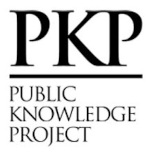Study of a New Strategy for the Anhydrous Ethanol Production in Units in Rio de Janeiro: Addition of Propylene glycol as Cosolvent
DOI:
https://doi.org/10.22408/reva702022445e-7002Abstract
The production of anhydrous ethanol, due to the presence of the azeotrope, is difficult using conventional distillation, at pressure atmospheric, as a separation process. One of the methods used is the extractive distillation, consisting in the addition of a third substance capable to change the vapor-liquid equilibrium of the system and obtaining the dehydration of ethanol. Therefore, the ethanol separation process using propylene glycol as solvent was evaluated using the ProSimPlus software. The simulation was done varying the solvent/feed ratios (S/F) in 0.5, 0.7 and 0.9 by weight. The results showed that the azeotrope was broken, obtaining the same ethanol fraction in the three ratios studied. Thus, it was chosen the lower ratio S/F (0.5) to measure the vapor-liquid equilibria of the ternary system, varying the molar concentration from 0.2 to 0.9. The experimental data were measured in triplicate in a similar Othmer's ebuliometer and the analyses of the samples were done in a digital densimeter. The experimental results showed that the azeotrope was broken, validating the results obtained in the simulation, confirming that the propylene glycol is a promising solvent for the production of anhydrous ethanol, and can be applied in the ethanol units present in Rio de Janeiro.
Downloads
Literaturhinweise
AGÊNCIA NACIONAL DO PETRÓLEO, GÁS NATURAL E BIOCOMBUSTÍVEIS (ANP). Resolução ANP n. 23 de 06/07/2010. Available in: <https://www.legisweb.com.br/legislacao/?id=113768>. Access in: 2019.
BARATTO, A. C.; DAMASCENO, J. C.; ALVES, J. A. P.; FILHO, T. J.; COUTO, P. R. G.; OLIVEIRA, S. P. Avaliação de dados de medição: Guia para a expressão de incerteza de medição, INMETRO, 2008.
GIL, I.D.; UYAZÁN, A.M.; AGUILAR, J.L.; RODRIGUEZ, G.; CAICEDO, L.A. Separation of ethanol and water by extractive distillation with salt and solvent as entrainer: process simulation. Brazilian Journal of Chemical Engineering, v. 25, n.1, p. 207-215, 2008.
GMEHLING, V. J.; ONKEN, U.; ARLT, W.; FRANKFURT, M. Vapor–liquid equilibrium data collection, aqueous-organic system (suppl.1), Dechema, vol.1, part1a, 1981.
JURADO, L.V.A.; SILVA, C. S.; MAGALHÃES, W.A.P.; MENDES, M.F. Equilíbrio líquido-vapor para o sistema ternário água-etanol-acetato de sódio: dados experimentais à pressão atmosférica. Revista de Ciências Exatas, v. 34, p. 47-61, 2016.
LAI, H. S.; LIN, Y. F.; TU, C. H. Isobaric (vapor + liquid) equilibria for the ternary system of (ethanol + water + 1,3-propanediol) and three constituent binary systems at P = 101.3 kPa. Journal of Chemical Thermodynamics, n. 68, p. 13-19, 2014.
MERENDA, D.; FURTER, W. F. Salt effects on vapor-liquid equilibrium: some anomalies. Aiche Journal, v. 20, n.1, p. 103-108, 1974.
PINZI, S.; LEIVA, D.; LÓPEZ‐GARCÍA, I.; REDEL‐MACÍAS, M.D.; DORADO, M.P. Latest trends in feedstocks for biodiesel production. Biofuels, Bioproducts and Biorefining, v. 8, n.1, p.126-143, 2014.
PLA-FRANCO, J.; LLADOSA, E.; LORAS, S.; MONTÓN, J. B. Phase equilibria for the ternary systems ethanol, water+ ethylene glycol or+ glycerol at 101.3 kPa. Fluid Phase Equilibria, v.341, p. 54-60, 2013.
SILVA, C.S. Equilíbrio líquido-vapor do sistema ternário etanol + água + 1-etil-3-metil imidazólio cloreto: experimental e modelagem termodinâmica. Dissertação (Mestrado em Engenharia Química) – Instituto de Tecnologia, Universidade Federal Rural do Rio de Janeiro, Seropédica, 2016.
SMITH, J. M.; VAN NESS, H. C.; ABBOTT, M. M. Introdução à Termodinâmica da Engenharia Química. 7º ed, Rio de Janeiro, LTC Editora, 2007.
SOARES, R. B. Estudo da destilação extrativa salina em coluna recheada para a produção de etanol. Dissertação (Mestrado em Engenharia Química) - Instituto de Tecnologia, Universidade Federal Rural do Rio de Janeiro, Seropédica, 2010.
SOARES, R.B.; Pessoa, F.L.P.; Mendes, M.F. Dehydration of ethanol with different salts in a packed distillation column. Process Safety and Environmental Protection, v. 93, p. 147-153, 2014.
SOUZA, W. L. R. Estudo do desempenho de uma coluna de destilação recheada na produção de etanol anidro usando glicerol como solvente. Dissertação (Mestrado em Engenharia Química) - Instituto de tecnologia, Universidade Federal Rural do Rio de Janeiro, Seropédica, 2012.
SOUZA, W. L. R.; SILVA, C. S.; MELEIRO, L. A. C.; MENDES, M. F. Vapor-liquid equilibrium of the (water + ethanol + glycerol) system: Experimental and modelling data at normal pressure. Journal of Chemical Thermodynamics, n. 67, p. 106-111, 2013.
ZHAO, J.; DONG, C. C.; LI, C. X.; MENG, H.; WANG, Z. H. Isobaric vapor–liquid equilibria for ethanol–water system containing different ionic liquids at atmospheric pressure. Fluid Phase Equilibria, v. 242, n. 2, p. 147-153, 2006.
Downloads
Veröffentlicht
Zitationsvorschlag
Ausgabe
Rubrik
Lizenz
Autores que publicam nesta revista concordam com os seguintes termos:
Autores mantêm os direitos autorais e concedem à revista o direito de primeira publicação;
Autores têm permissão e são estimulados a publicar e distribuir seu trabalho online (ex.: em repositórios institucionais ou na sua página pessoal) já que isso pode gerar alterações produtivas, bem como aumentar o impacto e a citação do trabalho publicado
Em virtude da aparecerem nesta revista de acesso público, os artigos são de uso gratuito, com atribuições próprias, em aplicações educacionais e não-comerciais.











